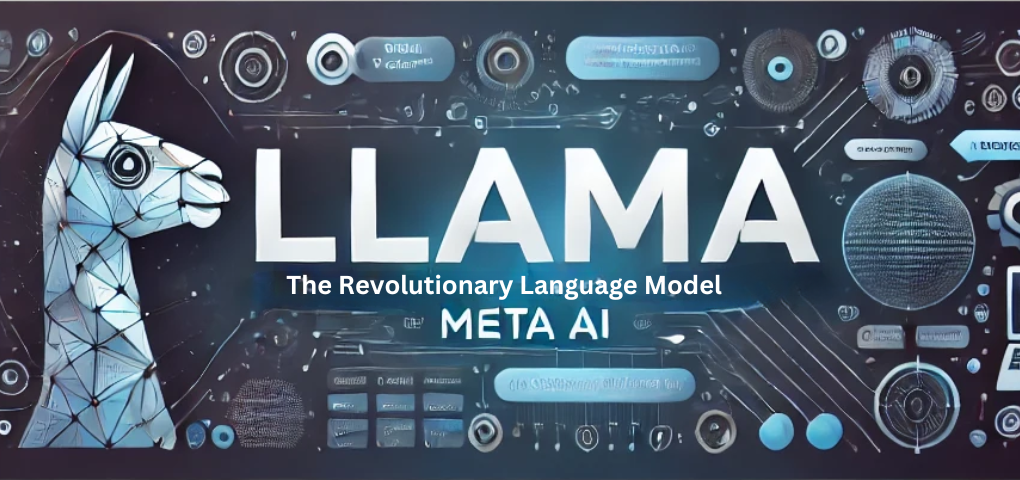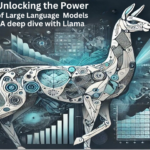Llama (Large Language Model Meta AI) is a groundbreaking family of autoregressive large language models (LLMs) developed by Meta AI. Initially released in February 2023, Llama has since evolved through multiple iterations, with the latest version, Llama 3.1, released in July 2024. This blog post delves into the intricacies of Llama, its evolution, architecture, and the innovative applications it has spawned.
Introduction to Llama
Llama was introduced as a foundational model, designed to push the boundaries of natural language processing (NLP). The initial release was met with significant interest, particularly due to its impressive performance on various NLP benchmarks. Llama models are trained at different parameter sizes, ranging from 7B to 405B, making them versatile for a wide array of applications.
Key Features
- Versatility: Llama models are available in various sizes, catering to different computational capabilities.
- Performance: The models have shown exceptional performance, often outperforming larger models like GPT-3.
- Accessibility: Initially restricted to academic use, subsequent versions have been made available for broader commercial applications.
Evolution of Llama
Llama 1
The first iteration, Llama 1, was released in February 2023. It was trained on a dataset comprising 1.4 trillion tokens from publicly available sources, including webpages, open-source repositories, Wikipedia, public domain books, and more. The model’s architecture leveraged the transformer model, with minor adjustments such as the use of SwiGLU activation functions and rotary positional embeddings.
Llama 2
Llama 2, released in July 2023, introduced several enhancements. The model was trained on a larger dataset of 2 trillion tokens, with a focus on removing web sites that often disclose personal data and upsampling trustworthy sources. Llama 2 also included fine-tuned chat models, which were trained on high-quality prompt-response pairs.
Llama 3 and Llama 3.1
Llama 3, released in April 2024, was pre-trained on approximately 15 trillion tokens of text from publicly available sources. It was fine-tuned on publicly available instruction datasets and over 10 million human-annotated examples. Llama 3.1, released in July 2024, further refined the model, offering three sizes: 8B, 70B, and 405B parameters.
Architecture and Training
Llama models utilize the transformer architecture, which has become the standard for language modeling since 2018. Key architectural differences include:
- Activation Function: Llama uses the SwiGLU activation function instead of GeLU.
- Positional Embeddings: Rotary positional embeddings are used instead of absolute positional embedding.
- Normalization: Root-mean-squared layer normalization is employed instead of standard layer normalization.
- Context Length: The context length was increased to 8k in Llama 3, compared to 4k in Llama 2 and 2k in Llama 1 and GPT-3.
Training Data
The training data for Llama models is sourced from a variety of publicly available datasets, including webpages, open-source repositories, Wikipedia, public domain books, and more. The focus has been on scaling the model’s performance by increasing the volume of training data rather than the number of parameters.
Applications and Use Cases
Virtual Assistant Integration
With the release of Llama 3, Meta introduced virtual assistant features to Facebook and WhatsApp in select regions. These services utilize Llama 3 models to provide advanced conversational capabilities.
Code Llama
Code Llama is a fine-tuned version of Llama 2, specifically designed for coding tasks. It was trained on code-specific datasets and has shown impressive performance in understanding and generating code.
Meditron
Meditron is a suite of Llama-based models fine-tuned on medical datasets, including clinical guidelines, PubMed papers, and articles. Developed by researchers at École Polytechnique Fédérale de Lausanne and the Yale School of Medicine, Meditron shows increased performance on medical-related benchmarks.
Zoom AI Companion
Zoom utilized Meta Llama 2 to create an AI Companion that can summarize meetings, provide presentation tips, and assist with message responses. This integration showcases the versatility of Llama models in real-world applications.
Community and Open Source
llama.cpp
Georgi Gerganov released llama.cpp, an open-source re-implementation of Llama in C++. This allows systems without powerful GPUs to run the model locally, making it accessible to a broader audience.
llamafile
Justine Tunney created llamafile, an open-source tool that bundles llama.cpp with the model into a single executable file. This tool introduced optimized matrix multiplication kernels, improving prompt evaluation performance.
Comparison of Models
| Name | Release Date | Parameters | Training Cost (petaFLOP-day) | Context Length | Corpus Size | Commercial Viability? |
|---|---|---|---|---|---|---|
| LLaMA | Feb 24, 2023 | 6.7B, 13B, 32.5B, 65.2B | 6,300 | 2048 | 1–1.4T | No |
| Llama 2 | Jul 18, 2023 | 6.7B, 13B, 69B | 21,000 | 4096 | 2T | Yes |
| Code Llama | Aug 24, 2023 | 6.7B, 13B, 33.7B, 69B | ||||
| Llama 3 | Apr 18, 2024 | 8B, 70.6B | 100,000 | 8192 | 15T | |
| Llama 3.1 | Jul 23, 2024 | 8B, 70.6B, 405B | 440,000 | 128,000 |
Conclusion
Llama represents a significant leap forward in the field of large language models. Its evolution from Llama 1 to Llama 3.1 showcases Meta AI’s commitment to pushing the boundaries of NLP. With applications ranging from virtual assistants to coding aids and medical research, Llama models are poised to revolutionize various industries.
As Meta continues to refine and expand the capabilities of Llama, the future looks promising for both researchers and developers. The open-source nature of some Llama models has fostered a vibrant community, driving innovation and accessibility. Whether you’re a developer looking to integrate advanced NLP capabilities into your applications or a researcher exploring the frontiers of AI, Llama offers a powerful and versatile toolkit.
Stay tuned for future updates and developments as Meta AI continues to lead the way in large language model innovation.

For more information, visit the official Llama website.
This blog post provides a comprehensive overview of Llama, its evolution, architecture, and applications. If you have any questions or would like to learn more, feel free to reach out!


